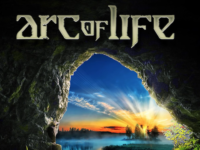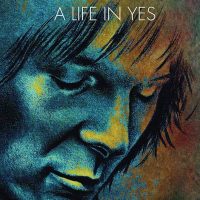If Yes’ Union — featuring every major contributor to the prog band’s legacy, save for Peter Banks and Trevor Horn — seemed a bit too good to be true, that’s because it was. Released on April 30, 1991, Union was less multi-generational homecoming than Frankenstein monster, an album pieced together from separate projects.
It arrived during a period of transition. Yes’ then-current membership (Tony Kaye, Chris Squire, Trevor Rabin, Alan White and newer collaborators like Billy Sherwood) were struggling to begin again following 1987’s Big Generator and Jon Anderson’s departure. Though they’d worked together on consecutive albums going back to 1983’s smash 90125, Anderson had yet to connect with Rabin.
“In those days, it was a question of making of making good music, so much as making a hit record again after 90125,” Anderson tells us, in an exclusive Something Else! Interview. “Big Generator just didn’t happen. It was overblown, and overdone. I really had no part in that project; I just went in and sang. They wanted to keep me out of the way, so I kept myself busy.”
He did so by joining a group of familiar past Yes contributors (Bill Bruford, Rick Wakeman and Steve Howe) to form a separate band with bassist Tony Levin. “With Steve and Bill and Rick, it was so easy,” Anderson said, “because they just wanted to make music. So, the album worked.”
Principally, because it sounded just like … well, Yes. Only, for contractual reasons, they ended up being dubbed Anderson Bruford Wakeman and Howe — a bit like having a car and calling it “Steering Wheel, Transmission, Radials and Chassis.” By the time ABWH reconvened for a sophomore effort, however, some of Trevor Rabin’s demos had become part of the conversation, and a label representative had a bright idea.
Union simply smashed these two similar, but very different, bands together under the by-now-tattered Yes banner. Jon Anderson, for instance, ended up simply adding his voice to a trio Trevor Rabin songs, including the single “Lift Me Up,” as well as the already-finished “The More We Live” — which grew out of a separate Squire project with Billy Sherwood. “We clicked musically and personally,” Sherwood said of Squire, in a separate Something Else! Sitdown. “There was lot of laughs, and a lot of good music. It was always very, very easy. Of course, it then became interesting to take the dynamic that he and I created as a writing team, and then go into the Yes mode.”
At this point, it mostly happened in isolation. Chris Squire likewise added backing vocals to completed Anderson Bruford Wakeman and Howe songs. Steve Howe’s “Masquerade” was an older, left-over solo piece. “Evensong” was a track Tony Levin and Bill Bruford began while on tour with Anderson Bruford Wakeman and Howe. “Saving My Heart” was apparently intended at first to be a collaboration between Rabin and Roger Hodgson, of Supertramp fame.
It sounds as pieced together as it in fact was, leaving the ironically dubbed Union as anything but. The album could only struggle to gold-selling status, Yes’ worst showing since Trevor Rabin’s arrival. And, despite all of the new firepower, Union only matched Big Generator‘s No. 15 showing on the Billboard charts.
The tour, which ballooned to nine members, was a similarly confusing jumble of patched-together personalities. “There were different ideas on how we would do it,” Steve Howe once admitted. “In the end, we stayed on the stage the whole time. I left for one song, and then I came back, and we couldn’t get any of the other guys to leave.”
Roundly understood to be an uneven, ultimately unsatisfying amalgam, Union nevertheless offered lingering positives for some of those involved.
For Sherwood, the album provided an entry point into his favorite band. He’s serve as a touring sideman, engineer, producer, full-fledged member and full-time peacekeeper through the ’90s, making major contributions to 1997’s Open Your Eyes and 1999’s The Ladder.
“My goal was to try to break down those partisan walls — because all of the music was so good,” Sherwood tells us. “There are people who won’t listen to Genesis, say, after 1978, but I can’t imagine that. I love all music. That was the one thing I tried to do, to bring unity. During the time I was with Yes, you heard new things, and classic things. For that, I am proud — to have aligned the planets for a moment in time. In the end, I got to see the classic version, and I worked with the 90125 version, as well. After viewing both versions, I helped come up with a new one. I wouldn’t trade it for the world.”
Union led to a lengthy association with both of Yes’ drummers for Tony Levin, as well. Besides ABWH, Levin also co-founded Bruford Levin Upper Extremities, with Bruford and David Torn. He then worked with both Torn and Alan White on the completely improvisational Levin Torn White.
For Anderson, there was a belated connection with Rabin, leading directly to a return to Yes and their most collaborative album ever, 1994’s Talk. “We all got together, of course, and did Union and then me and Trevor started to really bond at that time,” Anderson says. “We hadn’t really bonded before, so it was a real interesting time.”
- How Deep Cuts on ‘Music From Big Pink’ Underscore the Band’s Triumph - July 31, 2023
- How ‘Islands’ Signaled the Sad End of the Band’s Five-Man Edition - March 15, 2022
- The Band’s ‘Christmas Must Be Tonight’ Remains an Unjustly Overlooked Holiday Classic - December 25, 2016




